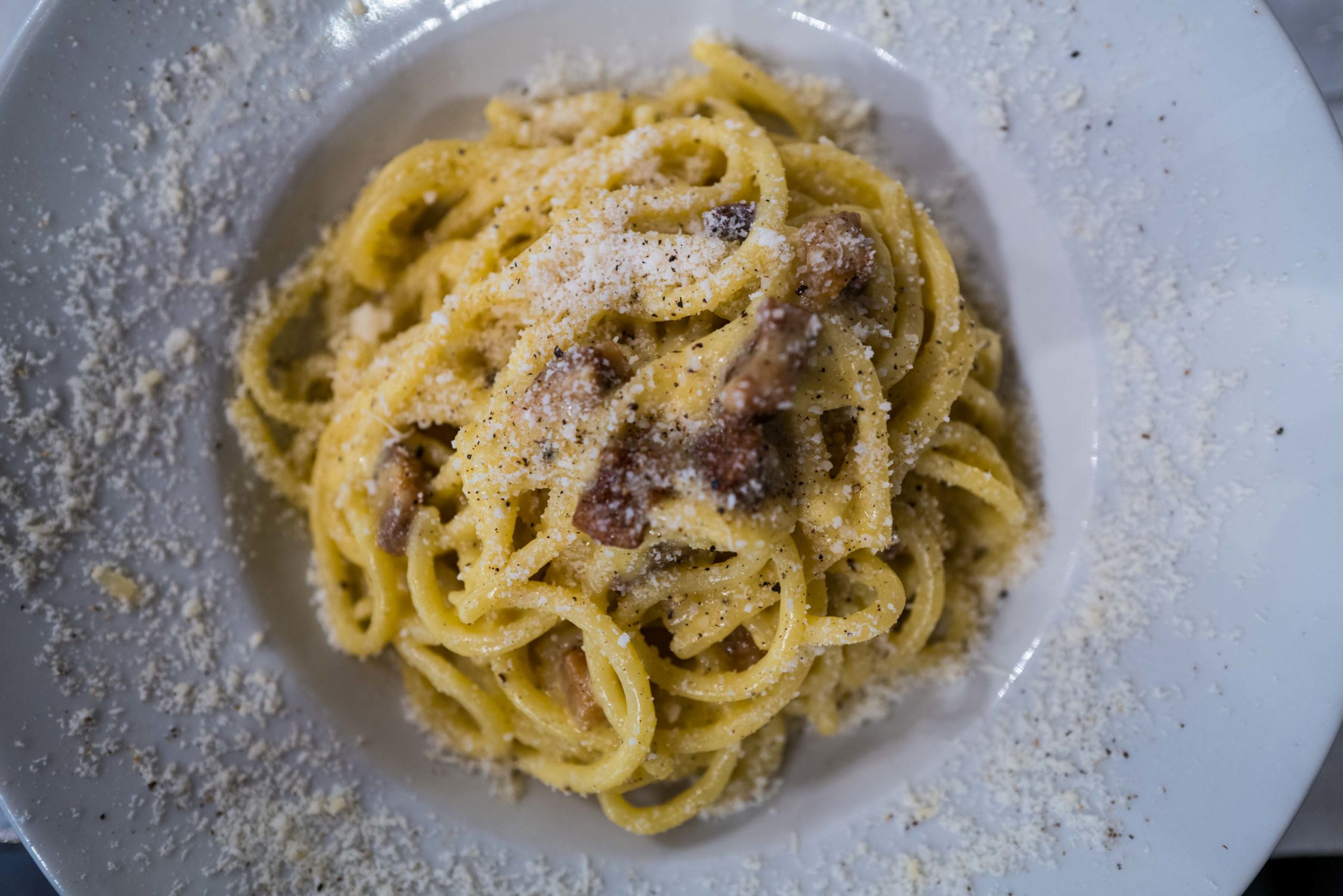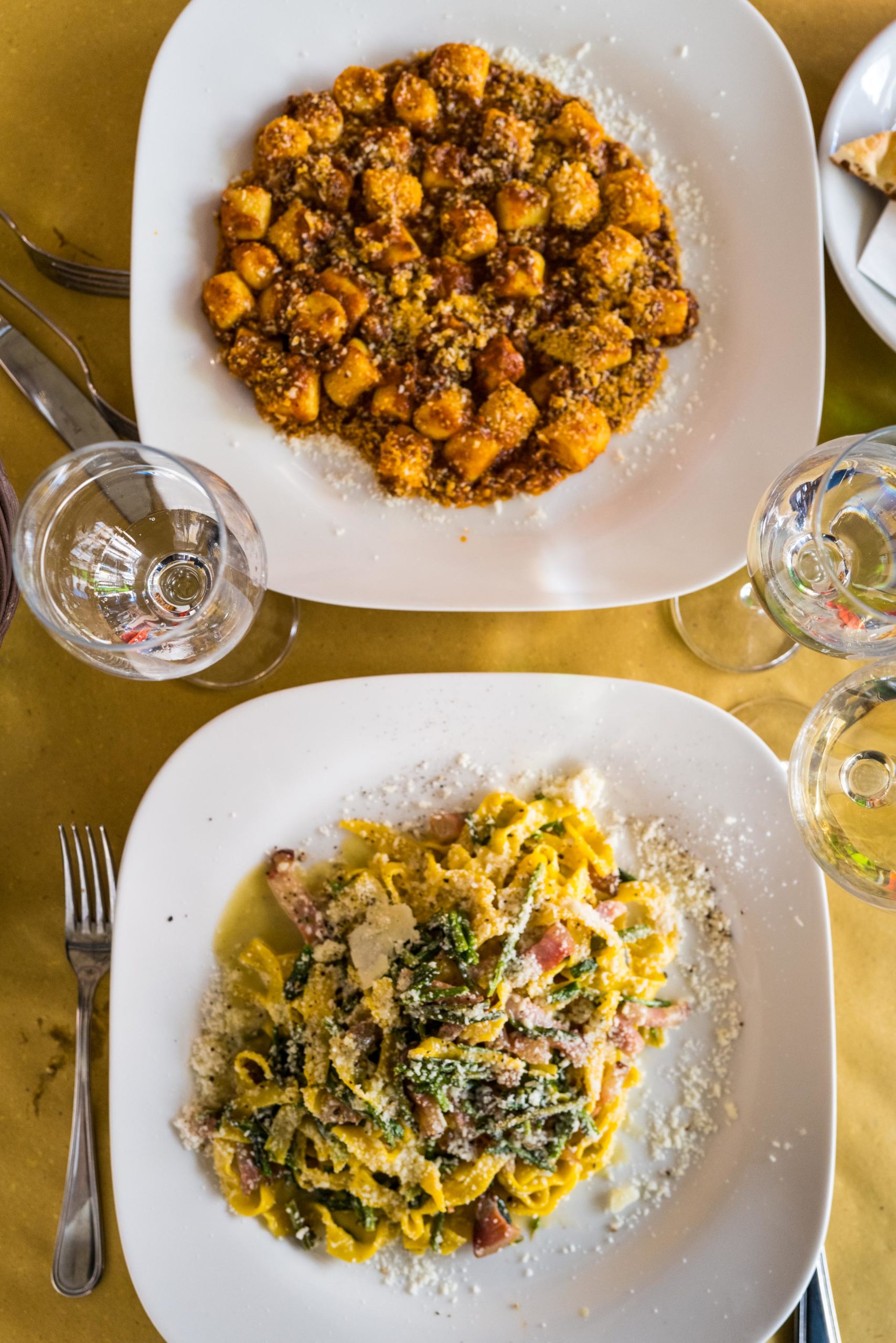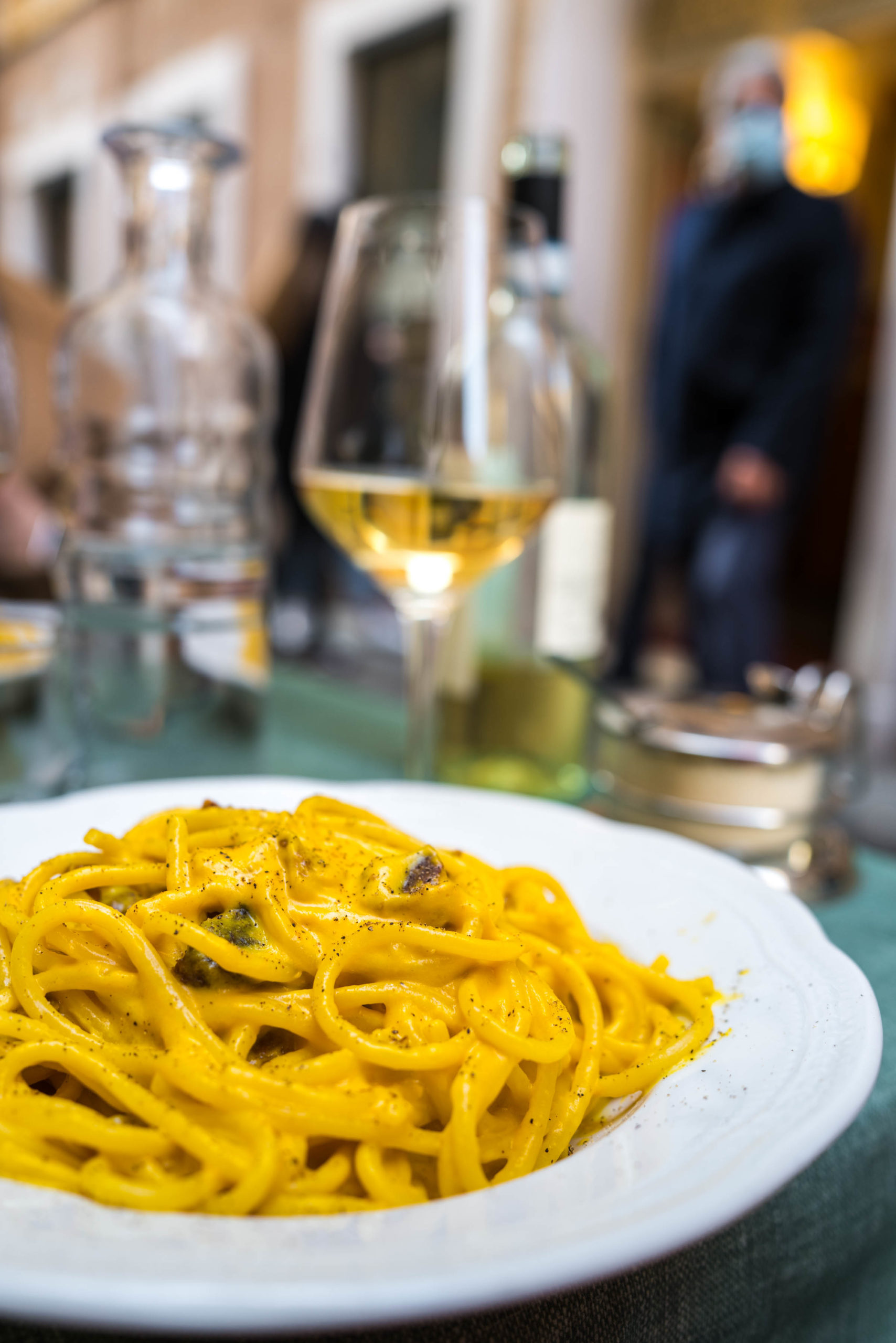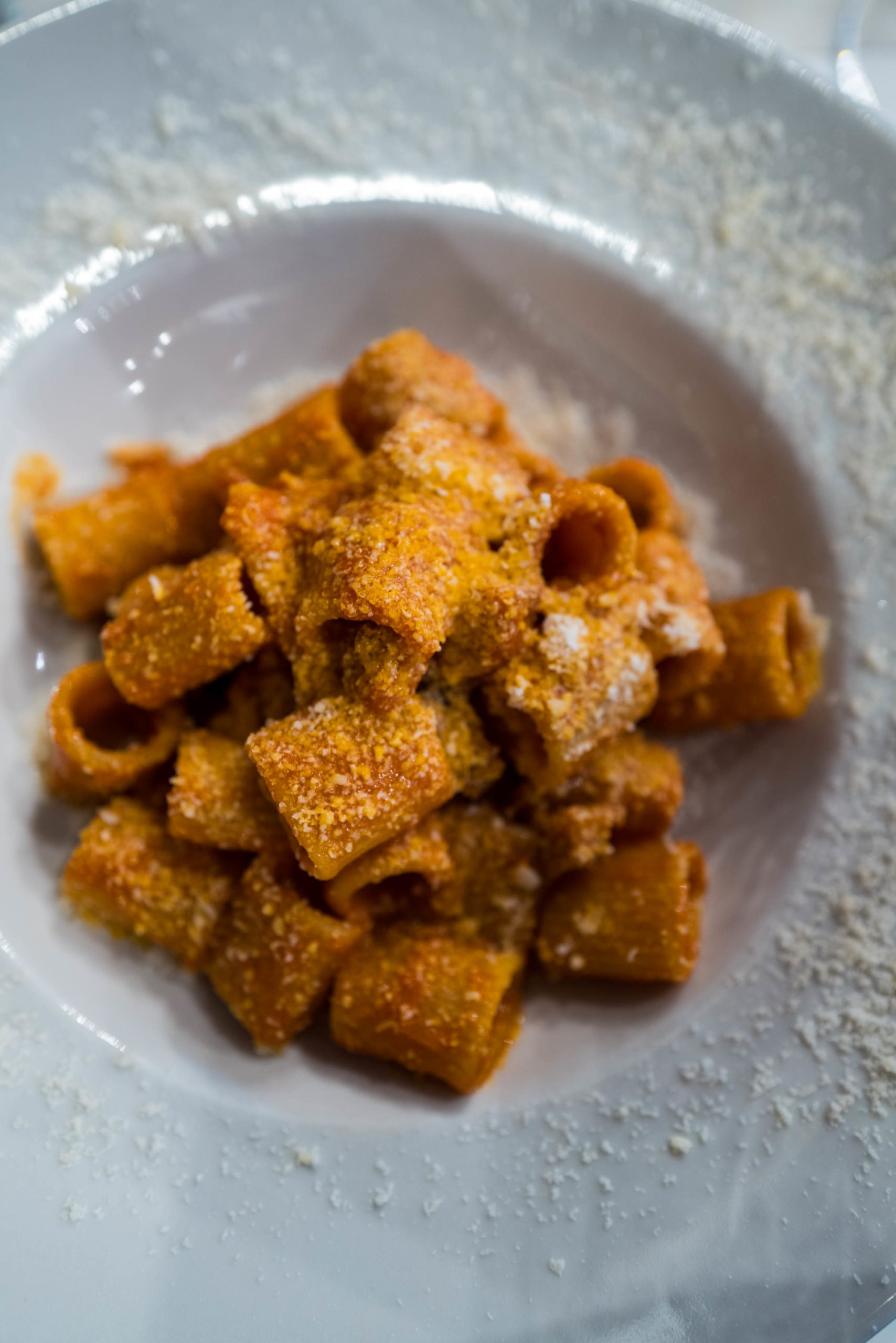
Each region of Italy has its own culinary specialties. The city of Rome is no different. Rome is the city of pasta and pizza by the slice. If you don’t eat carbs, you’ll be able to find good food, but this may not be the best food city for you. It’s a trip for history and carb lovers.
Rome has four main pastas; Cacio e Pepe, Gricia, Carbonara, and Amatriciana. We sampled them all at restaurants around Rome.


Cacio e Pepe is the simplest, but it takes work to make a standout pasta. When people make the dish at home, they often use dried spaghetti, Parmesan cheese, and cracked pepper to create a rich and creamy sauce with the pasta water. In Rome, the pasta is traditionally made with tonnarelli, a handmade pasta that’s thicker than spaghetti. The best Cacio e Pepe we had was with house made, toothy tonarelli noodles that were extremely long. We also had it served as a suppli — a deep fried ball of pasta served as a snack or appetizer.
Spaghetti alla Gricia is similar to Cacio e Pepe made with guanciale (cured pork cheek) added to the pasta. We had a version of this at Da Teo where they also added wild asparagus.


The next Roman pasta is Carbonara, which is basically Gricia with added eggs yolks. You may have heard of the Martha Stewart recipe where she added parsley, white wine, garlic, etc. This is not Carbonara and there was a huge outrage over it in Italy. And please, do not add cream. We do recommend getting the best eggs you can find. It makes a huge difference. We were offered both spaghetti and rigatoni, so you can safely use either without offending an Italian.
The final Roman pasta is Amatriciana. Instead of eggs, you take a version of Gricia and add tomatoes. This dish originates from Amatrice, also in the region of Lazio, which was devastated by an earthquake a few years ago. One of our favorite and easy Amatriciana recipes comes from Epiro. You can get the recipe in the second volume of The Taste Edit’s digital magazine. In Rome, we usually saw it made with rigatoni.